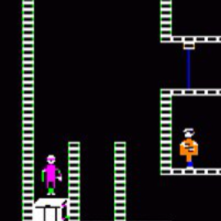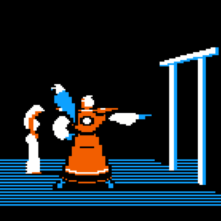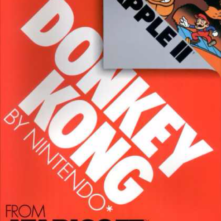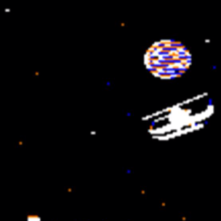I subscribe to only two monthly magazines, one of which is Game Informer. While it’s not my only source for video game news, I enjoy its in-depth features on game development, previews of upcoming titles, and reviews of games I might never play.
One of those games is Wolfenstein II: The New Colossus, a first-person shooter and the eighth in the Wolfenstein series, released just this past October. The game follows protagonist William "B.J." Blazkowicz, introduced in 1992 in the series’ original first-person shooter, Wolfenstein 3D, as he sets about to free an alternate-history modern America of its Nazi rule.
I haven’t played any Wolfenstein games since that 1992 title, but I was struck by this passage in Game Informer‘s review of the latest game:
The New Colossus does not shy away from tough themes but, on the contrary, aggressively pursues them. The 14-hour campaign tackles racism, being complicit in cruelty, executions, child abuse, despair, patricide, the holocaust, white supremacy, and terrorism. While these themes are dark, the game handles them well, giving a proper amount of drama and emotional depth to each while also refusing to offer easy answers to the questions that plague the characters’ hearts. However, this parade of tragedy is never too much to bear, because the game takes the time to throw in wacky humor, like when machines are zapping Nazis into a fine red goop while Set Roth explains to B.J. just how broken his body is. You also see heartfelt moments of romance and friendship among the crew; amongst all the murder and sorrow, The New Colossus makes room for love and hope. Where these brands of tragedy and comedy might mix as well as water and oil in other games, here they are necessary parts to making this experience work as a cohesive whole.
My first reaction was to be impressed that the game had such a strong narrative. I’m a big fan of narrative-driven games, from Life Is Strange to Gone Home, and while first-person shooters often have story, they’re hardly the reason gamers play them. But it seems developer MachineGames and publisher Bethesda Softworks have nonetheless taken Wolfenstein’s plot seriously. For the first time in 25 years, I find myself wanting to play a Wolfenstein game.
My second reaction was to laugh at the absurdity of the juxtaposition of such a strong narrative with incredibly violent gameplay. The New Colossus is rated ‘M’ by the Entertainment Software Rating Board for reasons that include plot and narrative but which focus primarily on the action: "Combat is frenetic, with realistic gunfire, explosions, screams of pain, and large blood-splatter effects. Some weapons allow players to blow off enemies’ heads or cut off their limbs; cutscenes sometimes show decapitations and/or acts of disembowelment." It is no doubt this gratuitous violence, not the "heartfelt moments of romance and friendship", that will attract most gamers.
My third reaction was disbelief at how far the Wolfenstein franchise has come. Although it may have achieved mainstream popularity with its 3D incarnation in 1992, the series was founded in 1981 by Silas Warner‘s Castle Wolfenstein, a 2D, top-down stealth game. Did Warner ever expect that his humble program would evolve to "make room for love and hope"? Would he see any of his genetic code embedded in this descendant? What would he think of The New Colossus?
It’s impossible to say: the first and latest Wolfenstein games are so far removed from each other at this point as to share only a name and general anti-Nazi theme, such that Warner may see only a passing resemblance. But as a gamer, I’m heartened that the Apple II has made possible such a prominent, highly anticipated, and well-received entry in the modern gaming landscape. Whether or not most gamers realize it, our lineage persists.















